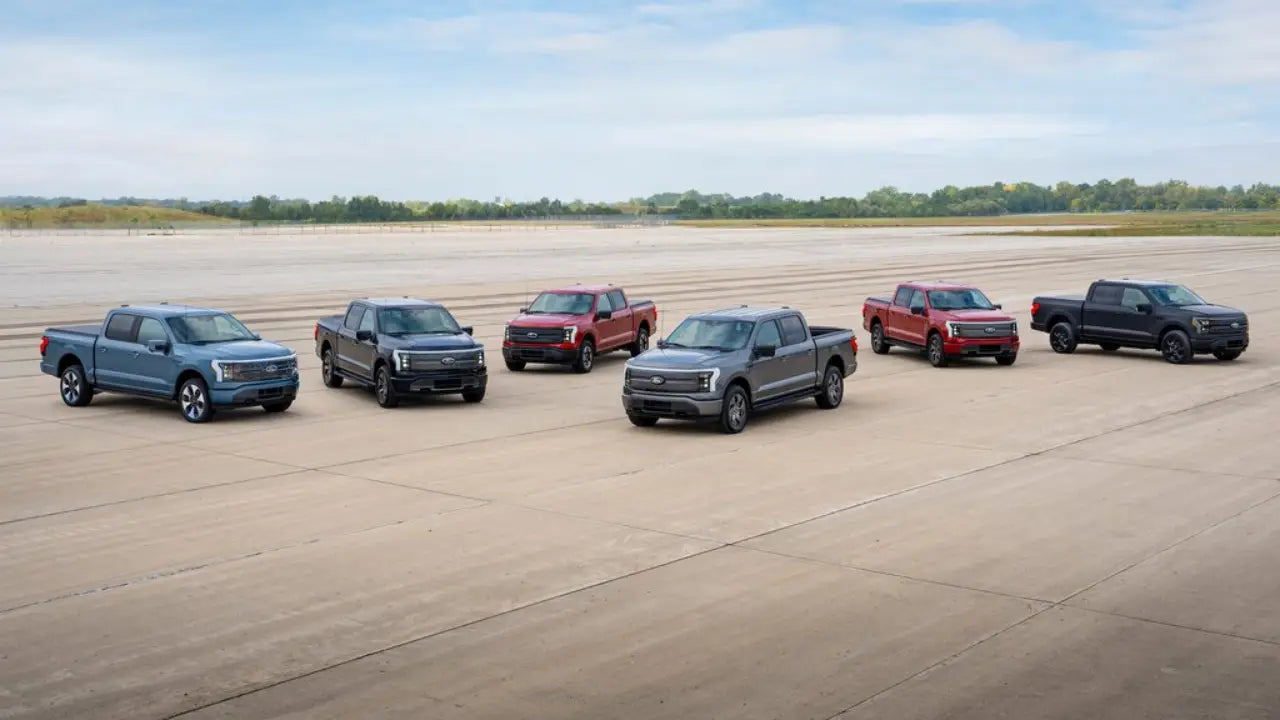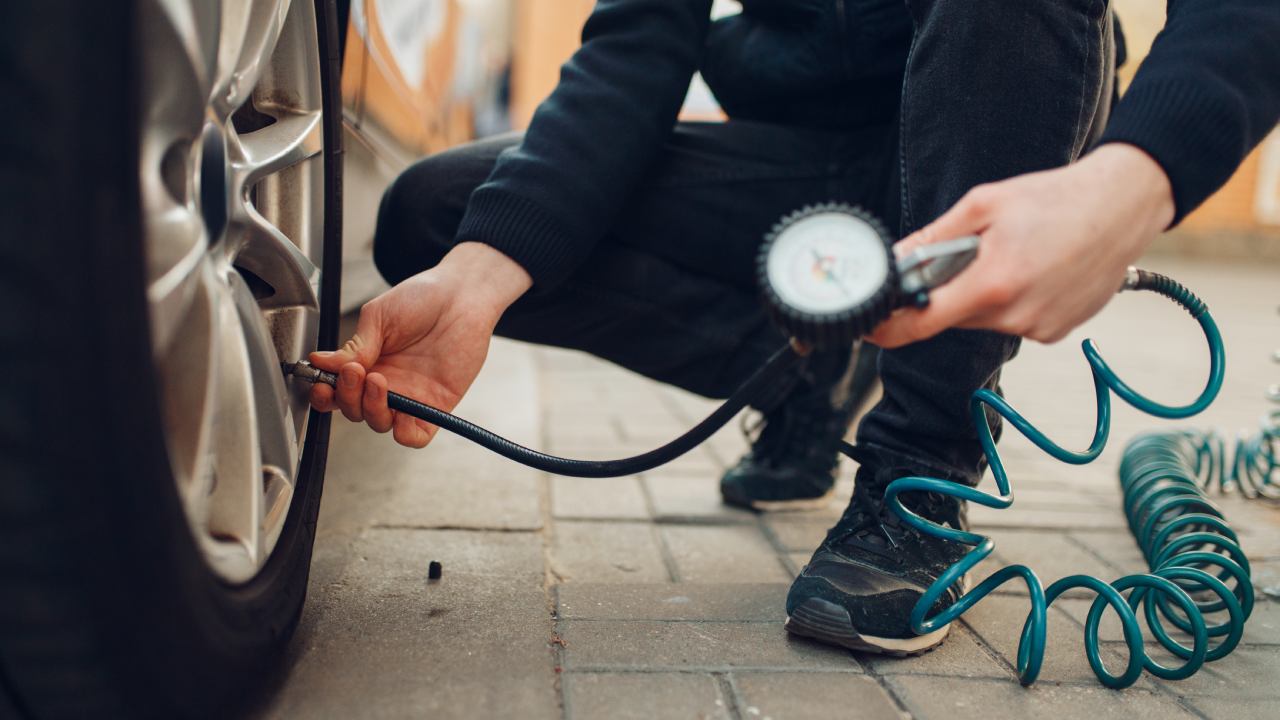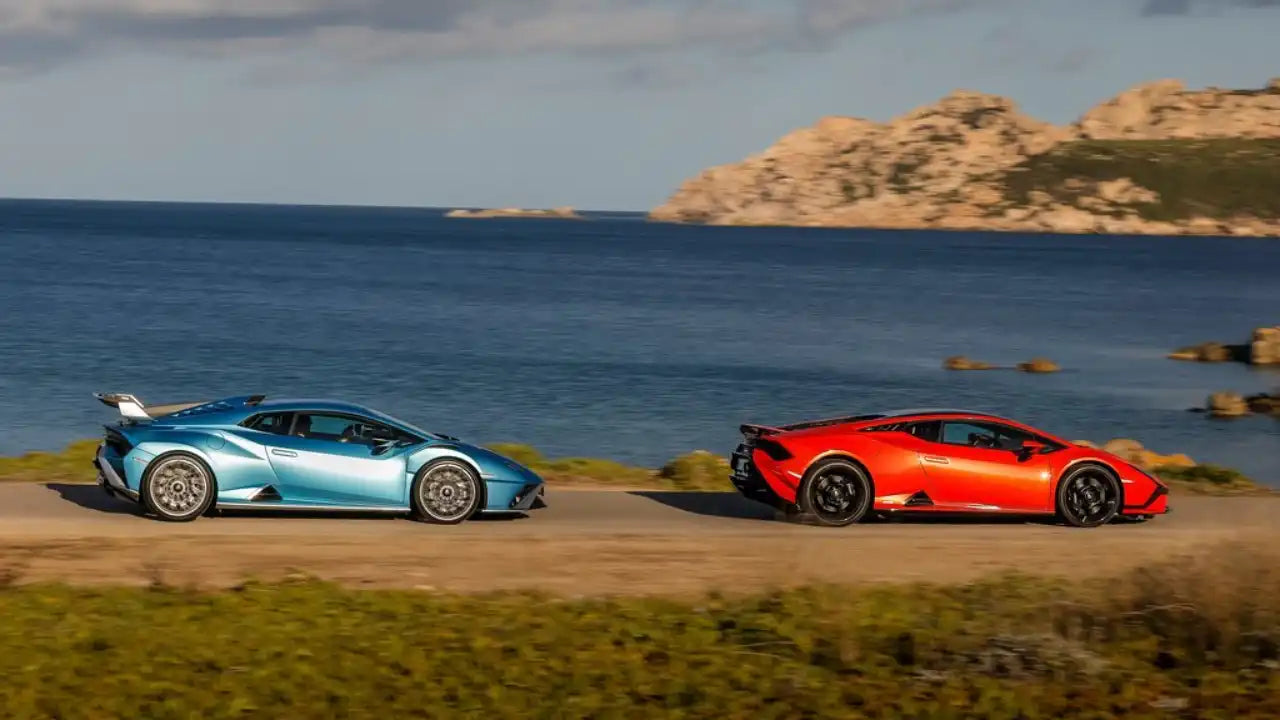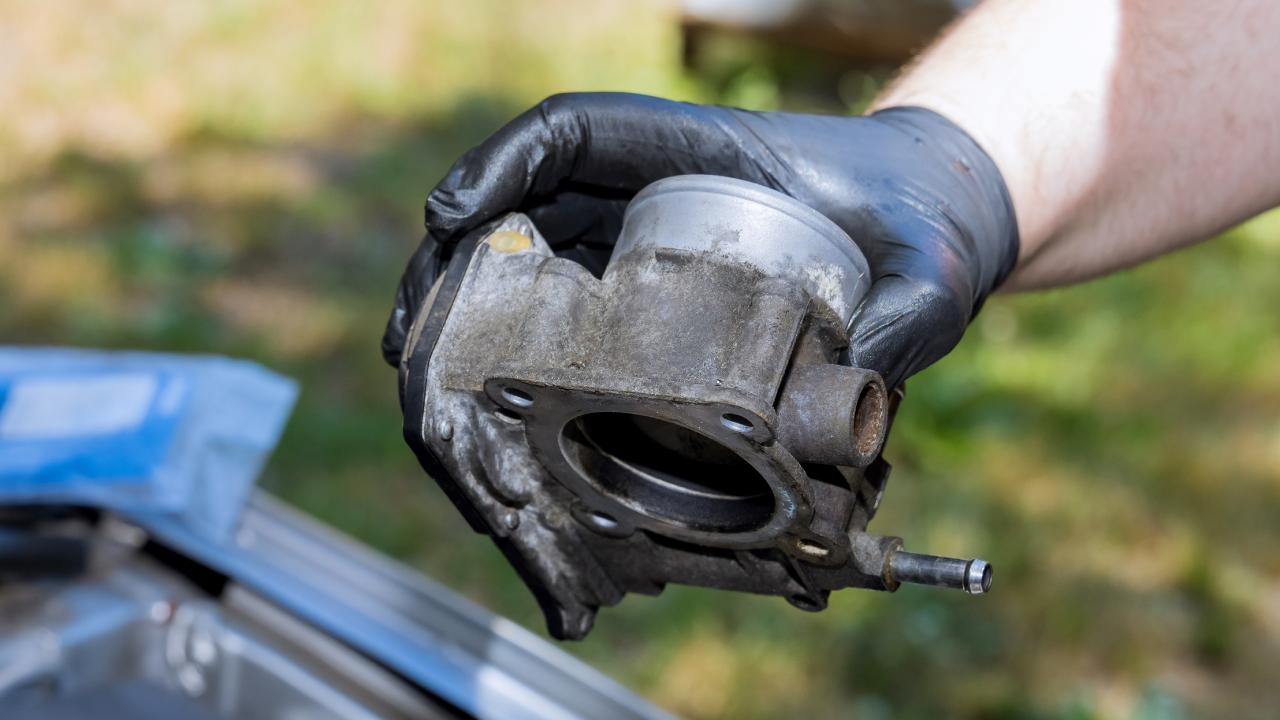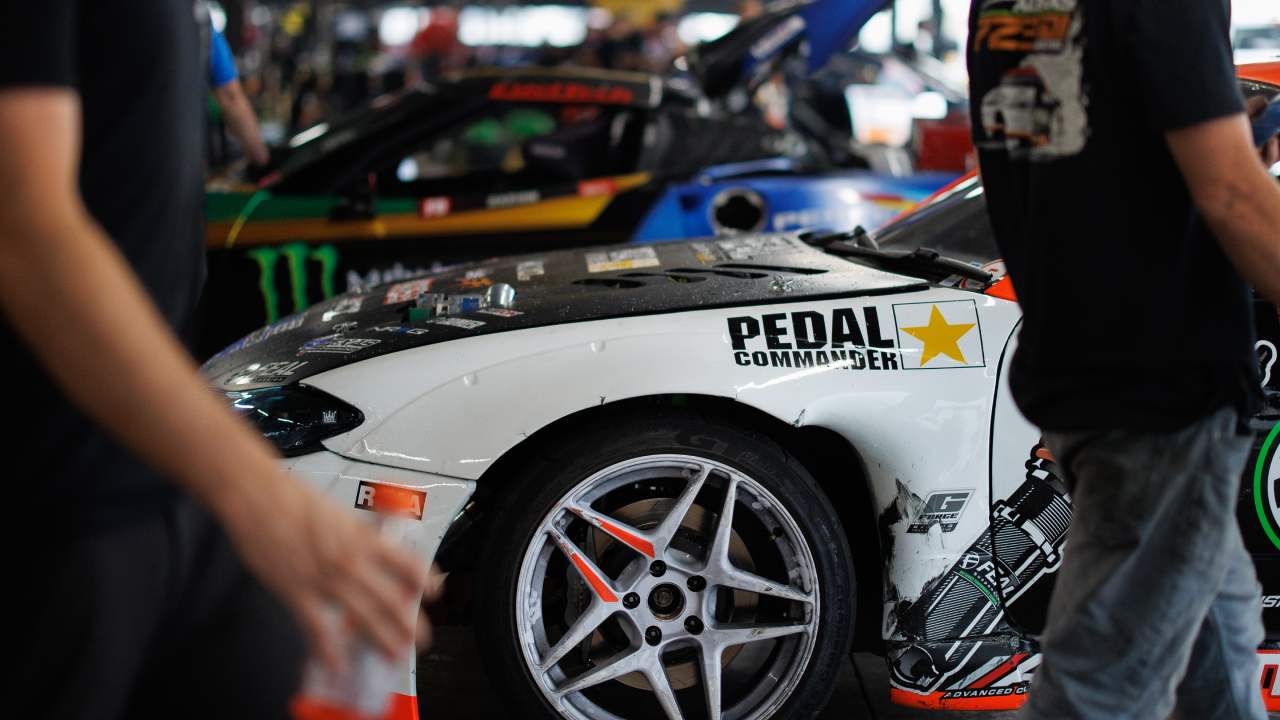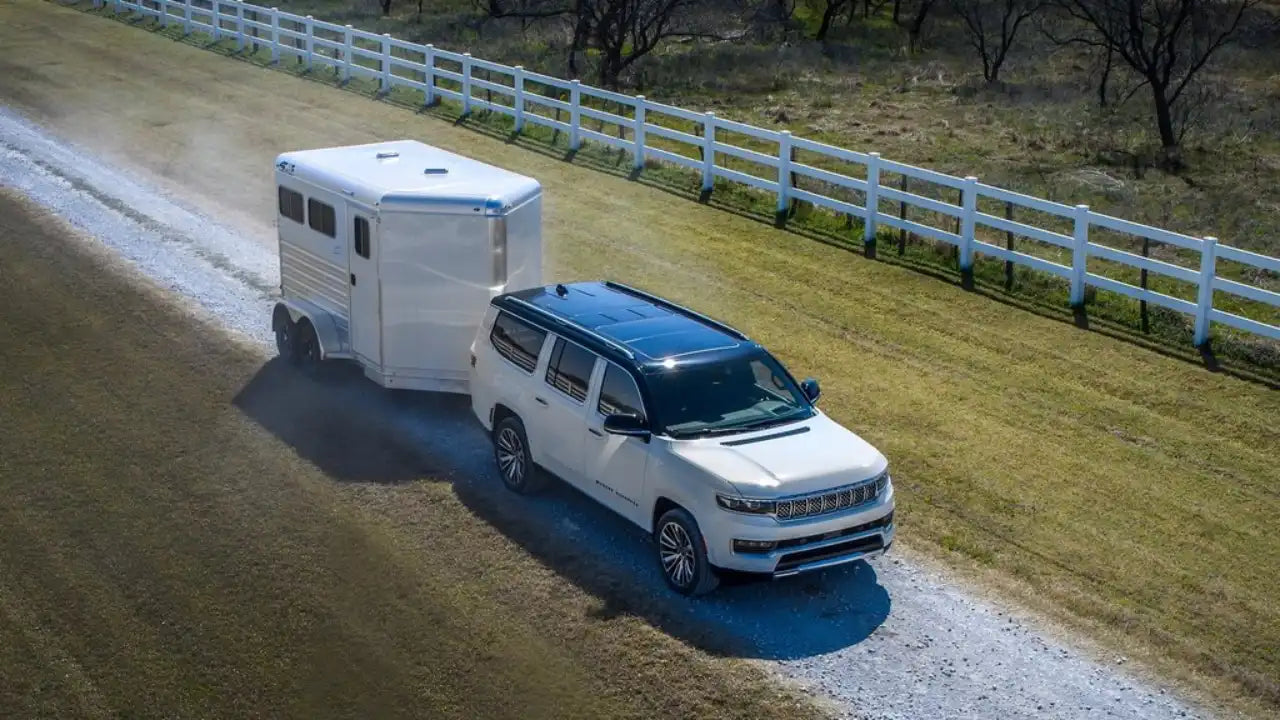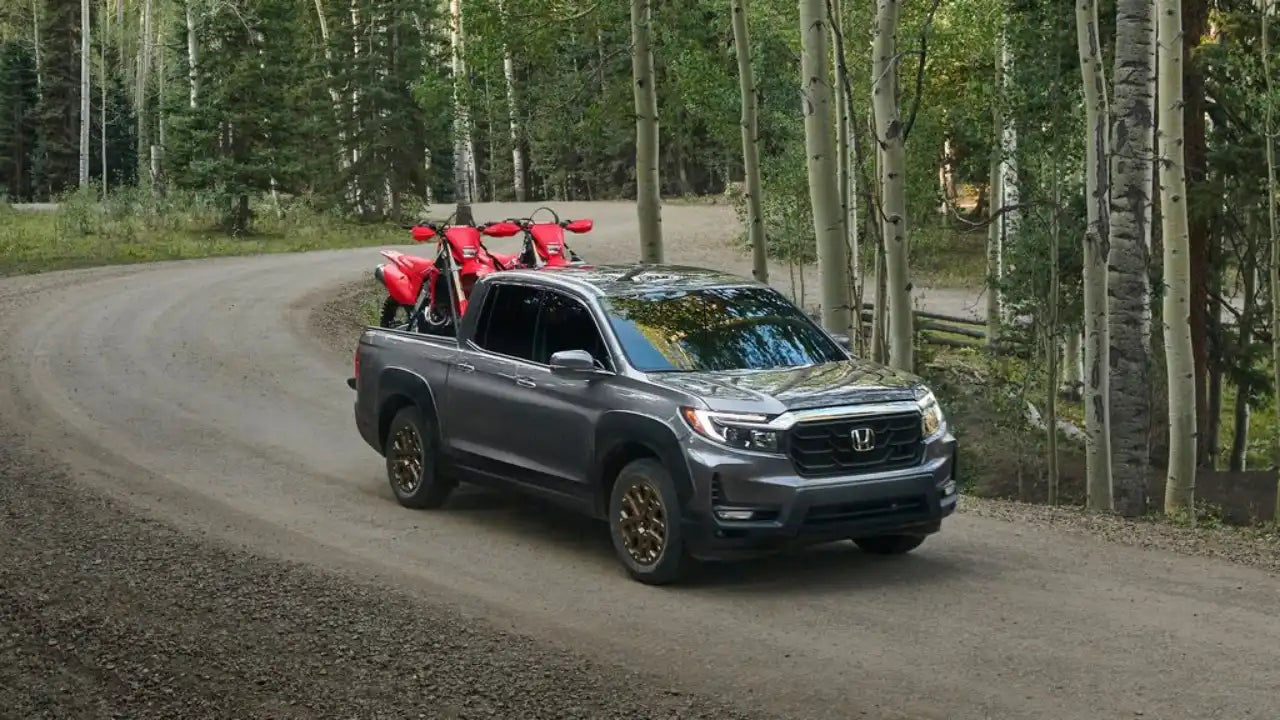Trucks: Love Affair in 50 States
Rahmi Doğucan E.Share
In the land of the free and the home of the brave, there's something we Americans hold dearer than the apple pie – our big cars. Yes, we're talking about those hulking, gas-guzzling, road-dominating SUVs that seem to be everywhere you look. But what's the deal with this obsession? Why do we love big cars so much, and should we really be hitting the brakes on this automotive love affair?
The Allure of Big Cars
Trucks, particularly heavy-duty and long-haul trucks, have a significant impact on the environment. These vehicles are crucial for the transportation of goods, but their reliance on internal combustion engines powered by diesel fuel contributes to various environmental challenges.

The burning of diesel fuel releases greenhouse gases, such as carbon dioxide and methane, being the major contributors to global warming and all that climate stuff. Additionally, diesel emissions contain particulate matter and nitrogen oxides, which are harmful to air quality and human health, causing much of the respiratory issues and other health problems.
Why SUVs? Well, Size Matters!
Picture it: You're cruising down the highway, ensconced in a plush leather seat with plenty of legroom, and the feeling of security envelops you like a warm hug from your grandma. Americans have a soft spot for big cars because they make us feel safe. And let's face it, who wouldn't want to be cocooned in a steel fortress in a world full of road warriors?

It's Not Just Love, It's Infrastructure!
But there's more to the story than just security. The American infrastructure loves big cars too. Our wide-open roads and expansive parking lots were made for vehicles that are, let's say, more Rubenesque. It's a match made in highway heaven.
Cheap Fuel: Filling Up that Truck’s Tank
And, of course, let's not forget the cost of fuel. Compared to many other parts of the world, we've got it pretty good. It's not exactly a secret that gas prices tend to be less of a wallet-sucker in the good ol' US of A. Cheap fuel makes those gas-guzzlers a little more lovable.
Historical and Policy Factors
The history of trucks is a fascinating journey through time, reflecting the evolution of transportation and the vital role these vehicles play in modern society. Here's a brief overview of the history of trucks:

Late 19th Century: The Birth of the Commercial Vehicle
The roots of the modern truck can be traced back to the late 19th century. Steam-powered wagons and horse-drawn carts were commonly used for transporting goods.
In 1896, the Daimler Motor Carriage, often considered one of the first true trucks, was engineered by Gottlieb Daimler & Wilhelm Maybach in Germany. Bad boy was powered by an internal combustion engine.
Early 20th Century: The Rise of the Pickup Truck
During the early 20th century, trucks began to gain popularity in the United States. Companies like Ford and Dodge started producing commercial vehicles.
The Ford Model T, introduced in 1917, played a significant role in the popularization of pickup trucks. It was versatile and could be adapted for various purposes.
1920s and 1930s: The Age of Innovation
Truck design and technology continued to evolve. Manufacturers introduced more powerful engines, improved suspension systems, and enclosed cabs for driver comfort.
The 1930s saw the emergence of well-known truck manufacturers like Mack Trucks, International Harvester, and Kenworth.
World War II: Trucks in Action
World War II marked a turning point in the history of trucks. Trucks played a crucial role in military logistics, transporting troops, equipment, and supplies on a massive scale.
The war effort spurred technological advancements in trucks, leading to more rugged and reliable vehicles.
Post-World War II: The Boom in Trucking
After the war, the trucking industry in the United States experienced a boom. The construction of the interstate highway system and the growth of the suburban lifestyle further increased the demand for trucks.
The 1950s and 1960s saw the rise of long-haul trucking, with companies like Peterbilt and Freightliner producing trucks specifically designed for cross-country transportation.
1970s and 1980s: Environmental and Safety Regulations
During the 1970s and 1980s, trucks became subject to stricter environmental and safety regulations. These regulations led to the development of cleaner and safer trucks.
Introduction of catalytic converters and more aerodynamic designs, improved truck fuel efficiency and reduced emissions.
1990s and Beyond: Technological Advancements
In recent decades, the trucking industry has embraced technology. The integration of computer systems, GPS, and telematics has enhanced logistics and efficiency.
There has been a growing interest in alternative fuels and electric trucks as the industry seeks more sustainable transportation solutions.
Today, trucks continue to be an indispensable part of the global economy, transporting goods and materials across vast distances. They come in various shapes and sizes, from pickups to heavy-duty long-haul rigs, and they will keep on evolving to meet the demands of the modern world, by mostly focusing on efficiency, safety, and environmental sustainability.
The '70s: When Pickup Trucks Became Cool
Now, let's rewind the clock to the funky '70s. That's when Uncle Sam decided that fuel efficiency rules were hip and groovy, but he had a soft spot for pickup trucks. So, he gave them a free pass. This set the stage for carmakers to transform these workhorses into everyday vehicles. Voila! The birth of the modern SUV.

The Humble Origins of SUVs and Their Statistical Value
Believe it or not, those behemoths on wheels have humble origins. The SUV's roots trace back to the likes of the Jeep Cherokee and the Chevy Blazer. These vehicles were designed with practicality in mind but, oh, how they've transformed into something more.
- Truck Sales in the U.S.: In recent years, trucks, including both light trucks (such as pickup trucks and SUVs) and heavy-duty trucks, have consistently accounted for a significant portion of total vehicle sales in the U.S. In 2020, light trucks made up about 78% of all vehicle sales.
- Best-Selling Trucks: The Ford F-Series has long been the best-selling truck in the U.S. It has consistently ranked as the top-selling vehicle for many years, with annual sales exceeding 800,000 units.
- Truck Market Share: Trucks have dominated the U.S. automotive market for years. In 2020, light trucks, including SUVs and pickups, held about 77% of the market share, while passenger cars accounted for the remaining 23%.
- Heavy-Duty Truck Market: The U.S. is a major market for heavy-duty trucks, commonly used for commercial purposes. In 2019, about 264,000 Class 8 trucks (the largest category of heavy-duty trucks) were sold.
- Truck Fuel Efficiency: One of the concerns with trucks is their fuel efficiency. While there have been significant improvements in recent years, the average miles per gallon (MPG) for light-duty trucks in the U.S. remains lower than that of passenger cars. In 2021, the average fuel economy for light trucks was approximately 17.5 MPG.
- Truck Emissions: Reducing emissions from trucks has been a focus in the industry. The Environmental Protection Agency (EPA) is the one who says the word about emissions standards for trucks, and there is a growing interest in electric and alternative fuel trucks to lower greenhouse gas emissions.
- Truck Safety: Safety is a crucial aspect of the trucking industry. In 2019, there were approximately 4,119 fatal crashes involving large trucks in the U.S. Efforts continue to improve truck safety through technology and regulations.
- Truck Manufacturing: The U.S. is home to several major truck manufacturers, including Ford, General Motors, Ram (part of Stellantis), and various heavy-duty truck manufacturers such as PACCAR (which produces Kenworth and Peterbilt trucks) and Navistar (now part of TRATON Group).
- Truck Ownership: Many Americans use trucks for personal and recreational purposes. Pickup trucks are popular for activities like towing trailers, camping, and outdoor adventures.
Luxury and Utility: The Perfect Match
Today, it's not just about space; it's about luxury. We want our vehicles to be a sanctuary on wheels. The transformation of utilitarian vehicles into premium luxury devices has made big cars more desirable than ever.
Market Trends and Marketing Combined with Truck Types and Preferences
American:
- The American truck sector is known for its strong preference for pickup trucks and SUVs. These vehicles are popular for personal use and have a robust presence in the light-duty truck category.
- Full-sized pickup trucks, like the Ford F-Series and Chevrolet Silverado, are top-selling vehicles, with a strong emphasis on versatility, towing capacity, and off-road capabilities.
European:
- In Europe, smaller passenger cars and compact vehicles are more prevalent for personal use. However, vans and smaller utility vehicles, often known as commercial vehicles, play a central role in the European market.
- European cities' compact infrastructure and emphasis on fuel efficiency have made smaller vans and compact trucks, like the Ford Transit and Volkswagen Transporter, more common for urban transportation.
Regulatory Environment
American:
- The United States has specific regulations for truck emissions and safety standards, overseen by agencies like the Environmental Protection Agency and the National Highway Traffic Safety Administration (NHTSA).
- While there have been efforts to improve fuel efficiency and reduce emissions, the U.S. has generally had less stringent emissions standards compared to Europe.
European:
- Europe has been a pioneer in implementing stringent emissions standards for trucks. The Euro standards, established by the European Union, set strict limits on emissions of nitrogen oxides (NOx) and particulate matter.
- These standards have led to the development of more fuel-efficient and environmentally friendly trucks in the European market.
Market Dynamics
American:
- The U.S. truck sector is characterized by a strong emphasis on long-haul trucking for goods transportation across vast distances. The market includes a mix of domestic and international manufacturers.
European:
- The European truck sector is marked by a highly integrated road network and a focus on regional and urban logistics. Smaller commercial vehicles are more common, with a focus on fuel efficiency and maneuverability in congested city environments.
Technology and Innovation
American:
- The American truck sector has embraced innovations like electric and hybrid trucks, with a growing interest in alternative fuels. Electric pickups and delivery trucks have gained attention.
European:
- Europe has been at the forefront of electric truck technology, with several manufacturers producing electric models for urban delivery and logistics. European cities have been particularly receptive to electric commercial vehicles to combat urban pollution.
The Power of Marketing
Big carmakers know what we want, and they're not shy about showing it. They've poured their resources into marketing SUVs, making them look more appealing than a freshly baked pie. From heartwarming commercials to glossy brochures, they've got us hook, line, and sinker.
Bigger is Better: Weaker Rules, Bigger Cars
When it comes to regulations, it seems like the bigger, the better. Weaker rules incentivize car manufacturers to make larger vehicles in every category. That's why we have a smorgasbord of SUVs that can rival small houses in terms of size.
Concerns and Alternatives
What About the Pedestrian Predicament?
But it's not all sunshine and rainbows. There's a darker side to our love for big cars. Studies show that these giants can pose a threat to pedestrians. Replacing SUVs with smaller cars could have potentially saved lives. So, while we love the feeling of security, it comes at a price.
Environmental and Safety Concerns
And then there's the environment. Younger folks and the environmentally conscious are giving us all a reality check. The big car trend has implications for our planet, our wallets, and our safety. It's not just about how we feel inside the car; it's about what happens outside it too.
Smaller and Smarter Everyday, Eh? Alternatives on the Horizon
So, what's the alternative? Some individuals are opting for smaller, more fuel-efficient vehicles. Others are embracing alternative modes of transportation, like e-bikes. It's all about minimizing the carbon footprint without giving up the joy of being on the road.
Transition Away from Big Cars
A Policy-Driven Shift
The winds of change are blowing, and it all comes down to policy. The exemption of pickup trucks from fuel efficiency rules back in the '70s set the wheels in motion. Now, it's paving the way for a transition away from big cars.
The construction and maintenance of roads, often necessary to accommodate heavy trucks, can lead to habitat destruction and increased pollution runoff into local ecosystems. Efforts to mitigate the environmental impact of trucks include more fuel-efficient engines, the use of alternative fuels, and the promotion of electric or hybrid truck technology, all aimed at reducing emissions and fostering a more sustainable transportation system.
Potential Impact: Small Cars, Big Change
Imagine a world where smaller cars rule the road. It's not just a pipe dream; it could save lives and reduce our carbon footprint. But it's not without its challenges, and it might take a while to shift the automotive landscape.
Truck or not, one thing is certain!
So, is it time to break up with our beloved big cars? Well, that's a decision every driver will have to make. As we navigate the road ahead, we'll see whether we stick to our old love or embrace a new, more eco-friendly relationship with our automobiles. One thing's for sure, this American love affair with big cars isn't going anywhere – it's just getting a little more complicated.
So, we've spilled the beans on why Americans love big cars, and we've hinted at a solution. It's called the Pedal Commander®. Want to make your big car drive like a dream? This nifty gadget enhances your vehicle's throttle response, giving you the power you need when you need it. Say goodbye to sluggish acceleration and hello to road domination!




